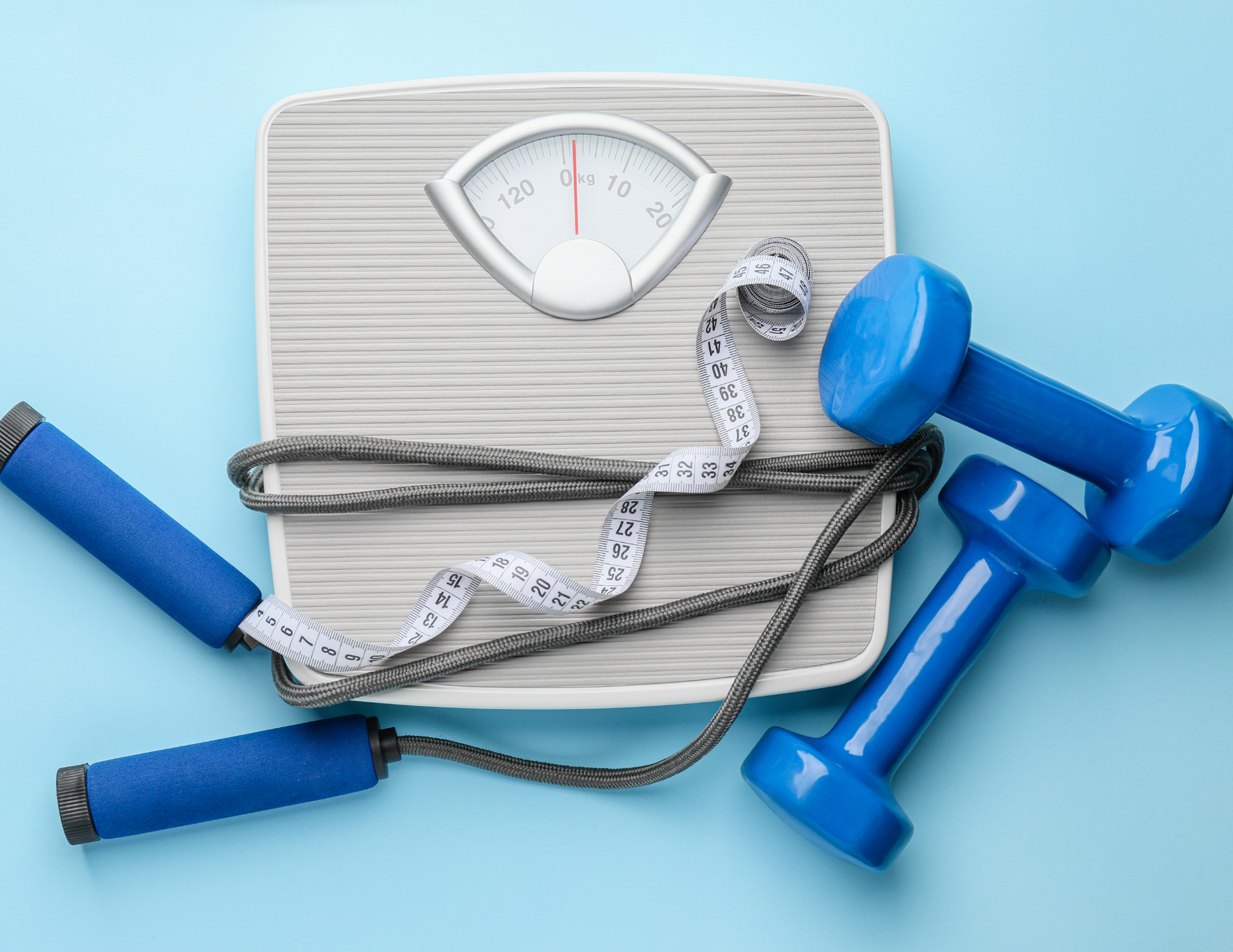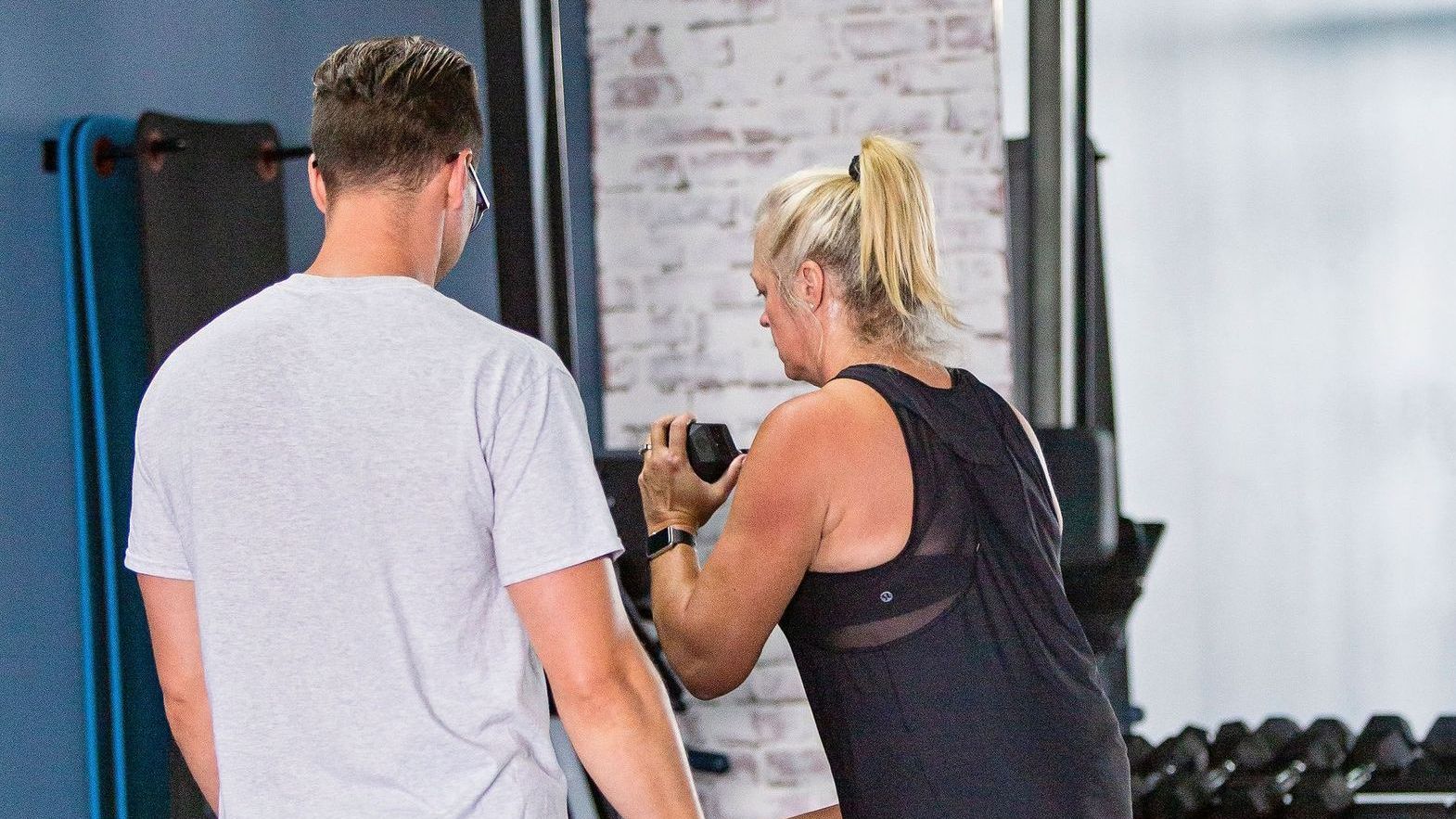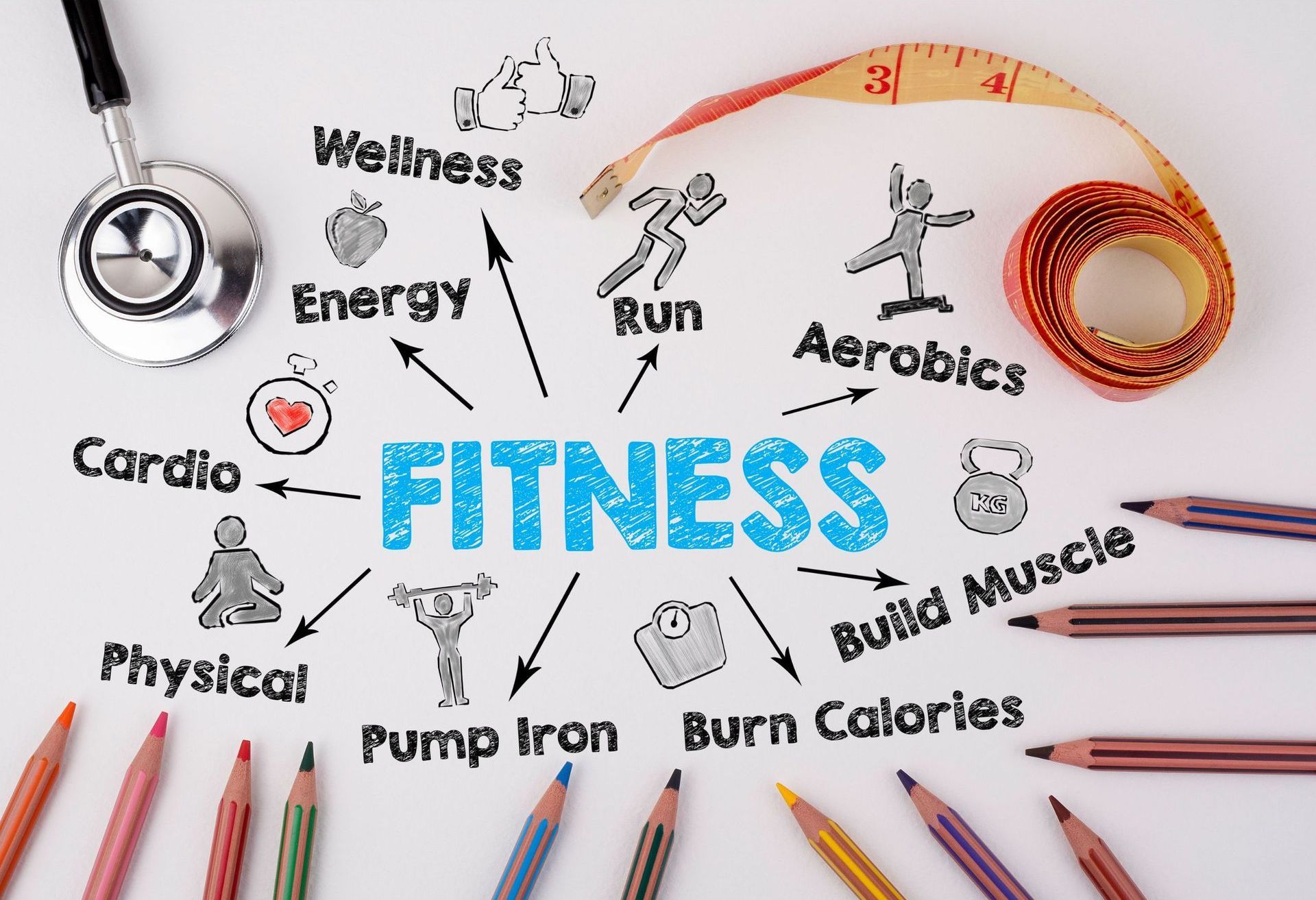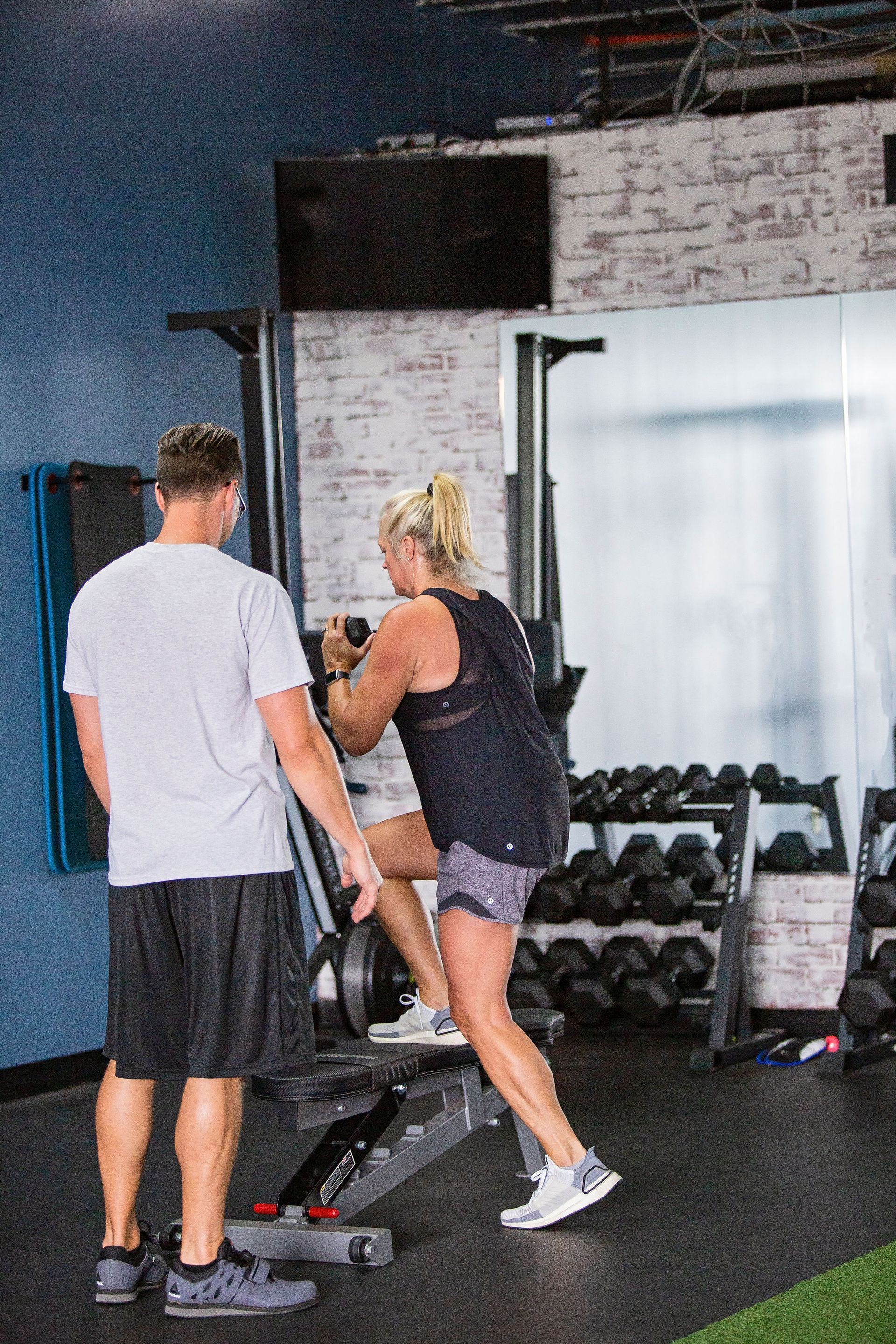Call Us today!
The Role of Strength Training in Weight Loss: A Personal Trainer's Guide
Why Strength Training is Crucial for Weight Loss

The Role of Strength Training in Weight Loss: A Personal Trainer's Guide
Many people who are trying to lose weight focus primarily on cardio exercises, such as running, cycling, or swimming. While cardio is an essential part of any weight loss plan, relying solely on cardio may not be the most effective way to achieve your goals. One significant problem is that cardio can lead to muscle loss, which can slow down your metabolism and make it harder to lose weight in the long term. Additionally, cardio alone may not be enough to build the muscle mass necessary to achieve a lean, toned physique.
Fortunately, there is another type of exercise that can help with weight loss: strength training. As a Personal Trainer and the owner of Hustle and Heart Fitness in Overland Park, I focus primarily on strength training with all of my clients. I’ll explain the role of strength training in weight loss and answer some frequently asked questions that I get asked.
Why Strength Training is Crucial for Weight Loss
Many people believe that cardio is the most important factor for weight loss, but the truth is that relying solely on cardio can actually be detrimental to your weight loss efforts. While cardio can burn calories and help you lose weight, it's not enough on its own. This is because prolonged cardio sessions can lead to muscle loss, especially if you're not consuming enough protein to support your muscles. As you lose muscle, your metabolic rate can slow down, making it harder to burn calories and lose weight in the long term.
This is where strength training comes in. By lifting weights or using resistance, you can build and maintain muscle mass, which increases your metabolic rate and helps you burn more calories throughout the day. When you have more muscle mass, your body burns more calories even when you're at rest, making it easier to lose weight and keep it off. In addition to helping you lose weight, strength training can also help you achieve a leaner, more toned physique by improving your body composition.
It's important to note that you don't need to become a bodybuilder to see the benefits of strength training for weight loss. Incorporating resistance exercises into your workout routine, such as using dumbbells, resistance bands, or bodyweight exercises like push-ups and squats, can be enough to help you build and maintain muscle mass. Even small increases in muscle mass can make a big difference in your weight loss efforts, and can help you achieve a healthier, more fit body.
Cardio vs. Strength Training: Which is Better for Weight Loss?
When it comes to weight loss, both cardio and strength training can be effective, but each has its own unique benefits. Cardio, such as running, cycling, or swimming, is great for burning calories and improving cardiovascular health. It's also an effective way to reduce stress, boost mood, and increase endurance.
Strength training, on the other hand, focuses on building and maintaining muscle mass, which can increase your metabolic rate and help you burn more calories throughout the day. Strength training can also improve your overall fitness by increasing your strength, balance, and flexibility, therefore it is great for people of all ages.
Incorporating both types of exercise into your routine can also help you avoid hitting a plateau in your weight loss efforts. As your body becomes more efficient at burning calories during cardio exercise, it can be helpful to switch things up and challenge your body in new ways by incorporating strength training. This can help you continue to see progress in your weight loss journey and keep you motivated to stick to your fitness routine.
So, while cardio is important for weight loss and overall health, strength training should be a part of your fitness routine. Combining both types of exercise can help you achieve the best possible weight loss results and improve your overall fitness and well-being.
How Often Should You Strength Train for Weight Loss?
According to the American College of Sports Medicine, it's recommended that adults do strength training exercises for all major muscle groups at least two days per week. However, for weight loss specifically, it's best to aim for at least three days of strength training per week. This is because when you're in a calorie deficit, your body may turn to your muscle stores for energy, which can lead to muscle loss. By doing regular strength training exercises, you can help prevent muscle loss and maintain your muscle mass while you're losing weight.
When it comes to the specific types of exercises you should do for weight loss, it's best to focus on compound exercises that work multiple muscle groups at once. Examples of these types of exercises include squats, lunges, deadlifts, bench presses, and pull-ups. These exercises require more energy and help you burn more calories compared to isolation exercises, which only work one muscle group at a time.
Therefore, if you’re exercising for weight loss specifically, it's best to aim for at least three days of strength training per week, focusing on compound exercises that work multiple muscle groups at once. This will help you build and maintain muscle mass, which can increase your metabolic rate and help you burn more calories at rest. By incorporating regular strength training into your weight loss plan, you can achieve better results and maintain your muscle mass while losing weight.
Do You Need to Lift Heavy Weights to See Results?
Many people believe that in order to see results from strength training, you need to lift heavy weights. While lifting heavy weights can certainly be effective for building muscle mass and strength, it's not necessary for weight loss, especially in the beginning. In fact, you can achieve weight loss results with light weights or even bodyweight exercises, as long as you challenge your muscles and gradually increase the intensity of your workouts over time. Once you can easily to12 reps, it’s time to bump up that weight. I promise, you WILL NOT bulk up, so do not worry about lifting heavier weights. If you are aiming to lose weight, you are definitely NOT eating enough calories to bulk in size. Trust me, I’ve been a Personal Trainer for over 15 years, and I’ve yet to make any of my clients “bulk up” while trying to lose weight.
The key to effective strength training for weight loss is to work your muscles to fatigue. This means that you're doing enough repetitions of an exercise to the point where you can't do any more with good form. This level of effort is what stimulates muscle growth and improves muscle tone, which in turn increases your metabolic rate and helps you burn more calories at rest.
If you're just starting out with strength training, it's important to focus on proper form and gradually increase the intensity of your workouts over time. This can involve using lighter weights and performing more repetitions, or doing bodyweight exercises with good form. As you get stronger and more comfortable with the exercises, you can gradually increase the weight or resistance to continue challenging your muscles and making progress towards your weight loss goals.
So, to sum things up, you don't need to lift heavy weights to see results from strength training for weight loss. By challenging your muscles with lighter weights or bodyweight exercises and gradually increasing the intensity over time, you can achieve weight loss results and improve your overall fitness and health. The key is to focus on proper form, work your muscles to fatigue, and be consistent with your strength training routine. If you’re just starting out, hiring a Personal Trainer to help with your form is always a great way to insure you will not injure yourself.
Can You Strength Train While on a Calorie-Restricted Diet for Weight Loss?
When you're trying to lose weight, it's common to focus on reducing your calorie intake through dieting. However, it's important to remember that cutting calories too drastically can sometimes lead to muscle loss, which can slow down your metabolism and make it harder to lose weight in the long term. This is where strength training comes in. By incorporating strength training into your weight loss plan, you can help preserve muscle mass and prevent your metabolism from slowing down, which can ultimately help you achieve your weight loss goals more effectively.
That being said, it's important to make sure that you're fueling your body with enough nutrients to support your workouts and recovery, especially if you're on a calorie-restricted diet. This means that you need to be mindful of your protein intake, as well as your intake of carbohydrates and healthy fats, which are also important for providing energy and supporting muscle growth and repair.
If you're on a calorie-restricted diet and you're also doing strength training, it's a good idea to work with a registered dietitian or nutritionist to develop a meal plan that meets your individual needs and supports your weight loss goals and strength training routine. They can help you determine the right balance of macronutrients for your body, as well as suggest specific foods and supplements that can help optimize your nutrition and support your workout and recovery needs.
In summary, it's definitely possible to strength train while on a calorie-restricted diet for weight loss. However, it's important to make sure that you're getting enough nutrients to support your workouts and recovery, and working with a registered dietitian or nutritionist can be helpful in achieving this. By combining strength training with a balanced, nutrient-rich diet, you can optimize your weight loss results and achieve a leaner, more toned physique.
The Importance of Strength Training for Weight Loss
In conclusion, strength training is a crucial component of any weight loss plan. By building and maintaining muscle mass, you can increase your metabolic rate and burn more calories even when at rest. Whether you're new to strength training or have been lifting weights for years, incorporating strength training into your workout routine can help you achieve your weight loss goals and improve your overall health and fitness. As a personal trainer in Overland Park, KS, I encourage you to start incorporating strength training into your workouts today. Not only will you see weight loss when adding strength training into your workouts, but there are so many proven benefits to lifting weights or resistance training for people of all ages, shapes and sizes. I highly recommend you add it into your workout routine and if you feel intimidated or don't know where to start, hiring a personal trainer is always a great way to get you feeling more confident about picking up some weights!
At Hustle and Heart Fitness, we offer infrared sauna sessions to help clients relax and recover. Give us a call at (913) 671-0318 or visit our website at www.hhfitkc.com to learn more.
For more than fifteen years, Ryan Isern has been helping clients achieve their fitness goals. Over five years ago he opened Hustle and Heart Fitness and has helped clients throughout Southern Johnson County and the surrounding area with their health and fitness needs. Want to give us a try? Click Here for a Free Workout or fill out the form below, and we’ll answer any specific questions you may have. We are not your typical gym. We are a boutique fitness studio that focuses on whole health centered around exercise, infrared sauna use, and nutritional therapy. We design workouts to fit anyone’s needs!
Hustle and Heart Fitness | (913) 671-0318 | Overland Park, Kansas
Hustle and Heart Fitness Studio | 8300 W 151st St | Overland Park, KS 66223
Fill out for a Free Workout & Consultation
We will get back to you as soon as possible.
Please try again later.









Browse our Website:
Contact Information:
Phone: (913) 671-0318
Email: ryan@hhfitkc.com
Address:
8300 W 151st St.
Overland Park, KS 66223
One block west of Highway 69
Hours of Operation:
- Monday
- -
- Tuesday
- -
- Wednesday
- -
- Thursday
- -
- Friday
- -
- Saturday
- -
- Sunday
- Closed
By appointment only
Browse our Website:
Contact Information:
Phone: (913) 671-0318
Email: ryan@hhfitkc.com
Address:
8300 W 151st St.
Overland Park, KS 66223
One block west of Highway 69






Hours of Operation:
- Monday
- -
- Tuesday
- -
- Wednesday
- -
- Thursday
- -
- Friday
- -
- Saturday
- -
- Sunday
- Closed
By appointment only

